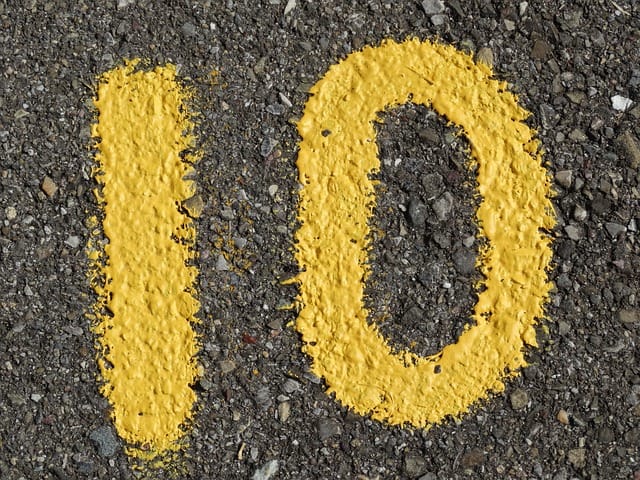Nature magazine published its traditional list of people of the year. Compared to previous years, it has more biologists and ecologists. Not without its quantum superiority, CRISPR-editing of the genome, “revitalization” of the pig’s head and Greta Thunberg.
Every year, Nature magazine closes with a list of 10 people of the year – those who have especially proven themselves in various fields of science. Among them are scientists who make discoveries, as well as other people: politicians, lawyers, environmental activists and even patients, such as Emily Whitehead, who was on the 2017 list because she became the first person to defeat cancer with the help of gene CAR-T therapy.
In recent years, in the top ten Nature turned out to be an antihero – a man who did really a lot, but not in support of science, but to fight it. This time there was no anti-hero, and biologists and ecologists seriously pressed physicists and public figures.
The list is opened by the person who himself suffered from the anti-hero – Ricardo Galvão. This elderly Brazilian physicist from the National Institute of Space Research accidentally went down in history as a fighter for the environment and the rights of scientists. A group under his leadership published a report on the disappearance of forests in the Amazon Valley. This problem itself is not new, but in 2019, scientists recorded dramatic changes. Their report was criticized by the president of Brazil, accusing Galvan of data distortion and conspiracy with environmentalists. In response to this, Galvan openly called the president a coward, for which he lost his post.
Another member of the environmental faction on the list is Sandra Díaz, co-chair of the Intergovernmental Panel on Biodiversity and Ecosystem Services (IPBES). In particular, she coordinated the work of researchers in 51 countries of the world, which resulted in a review report on the impact of humans on biodiversity. On one and a half thousand pages, experts spoke in detail about how it has changed so far and warned that about a million species of plants and animals may disappear from the face of the Earth in the coming decades.
The list also included two physicists. The first is Victoria Caspi, chief researcher for the search for fast radio bursts in the Canadian CHIME collaboration. Until recently, there were only two of them, but in 2019 the Caspi team discovered eight more – thereby significantly increasing the amount of information about these mysterious phenomena. The second physicist is John Martinis, head of the quantum computer lab at Google. At the end of October, his group announced that it had achieved quantum superiority, that is, it had solved a problem that was beyond the reach of modern supercomputers.
Every year Nature notes on its list of people who struggle to uphold ethical principles in science – for example, gender equality or honesty of published data. This time, Wendy Rogers, an Australian bioethicist, became such a person. Since 2016, she has been leading the advisory group to the international coalition, which is designed to stop violations of the law during organ transplants in China – there are suspicions that many of these bodies were received from prison inmates. The Rogers group carefully examined Chinese transplant articles from Chinese doctors. Now about two dozen such works have been recalled from journals – their authors could not clearly explain the origin of the donor organs. And recently, a group of Rogers analyzed the report of the Chinese authorities on the donation program and found it traces of falsification of data.
Nature also noted the work of four biologists. Yohannes Haile-Selassie discovered a new, unexpectedly well-preserved, skull of Anama Australopithecus. This skull belonged to that historical period, according to which the paleoanthropology lacked data – 3.8 million years ago. Filling the knowledge gap for this period, Haile-Selassie refuted one of the assumptions in the field of human evolution. Previously it was believed that Australopithecus afarensis (to which the famous Lucy belongs) descended from Anama, but a new discovery showed that at least a hundred thousand years two species existed in parallel.
Hongkui Deng was honored for demonstrating the safety of CRISPR-edited cells for treating HIV infection. True, his treatment was not effective – the reason for this was too low a percentage of editing – but he fixed and set a precedent useful for clinical practice, his main goal, the absence of side effects.
There was also talk about the probably most controversial experiment of the year – the partial restoration of functions in the pig’s brain after death. The media called him the revival and resurrection from the dead and fantasized about what thoughts might appear in such a brain. However, the head of the work, Nenad Sestan, claims that there is no talk of any resurrection here. His group simply showed a way to maintain nerve cell viability for several hours – which may be useful, for example, in long brain operations or clinical death.
Finally, Jean-Jacques Muyembe Tamfum, one of the first researchers to ebolavirus, is now recognized by Nature for his efforts to combat the Ebola epidemic in Congo. Muyembe coordinates not only work to prevent the spread of the disease, but also clinical trials. In particular, thanks to him, we know that there are effective medicines for fever, and in November 2019 the first vaccine was officially approved.
Greta Thunberg completes the Nature list. Following Time magazine, Nature appreciated the efforts it made to draw people’s attention to the problem of climate change – including young people who will join the scientific community in the near future.
Following the main list, Nature publishes a small postscript teaser for 2020. It includes those who, perhaps, have yet to contribute to world science, who are balancing on the border between ordinary research (and, possibly, even scandal) and significant discovery.
Source: Nature
A PDF is available to download
